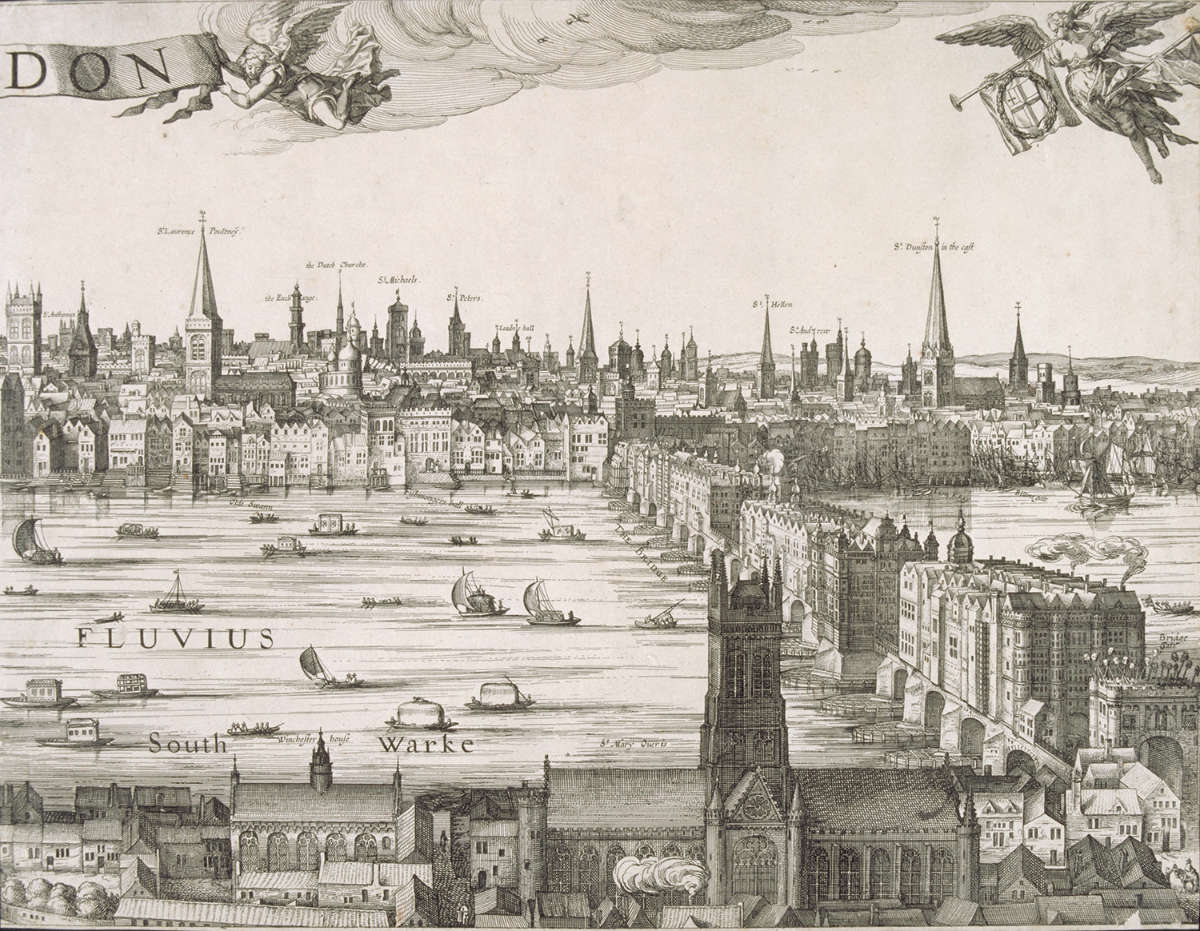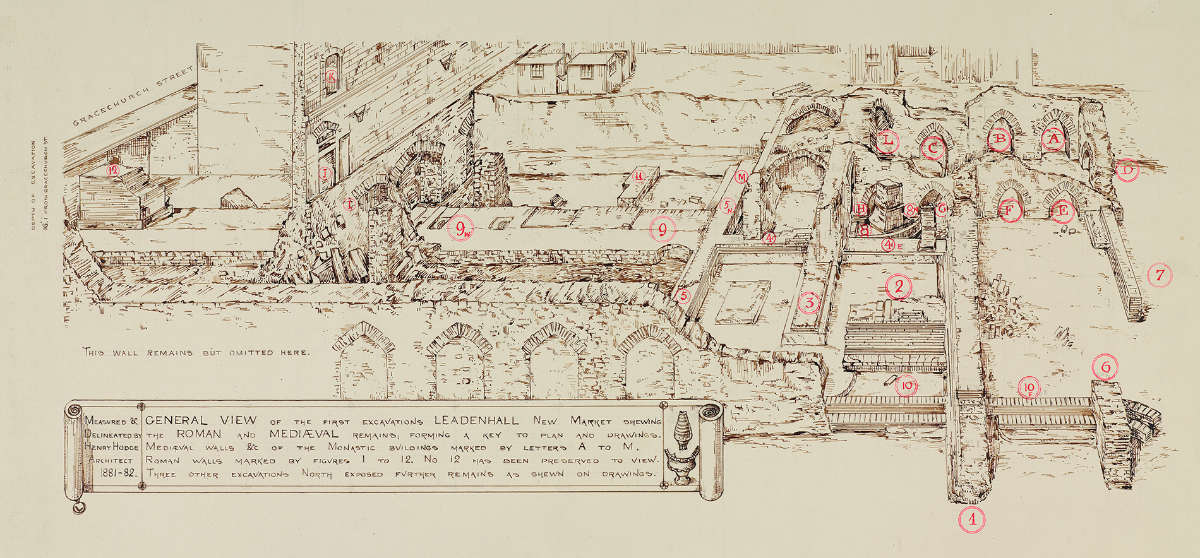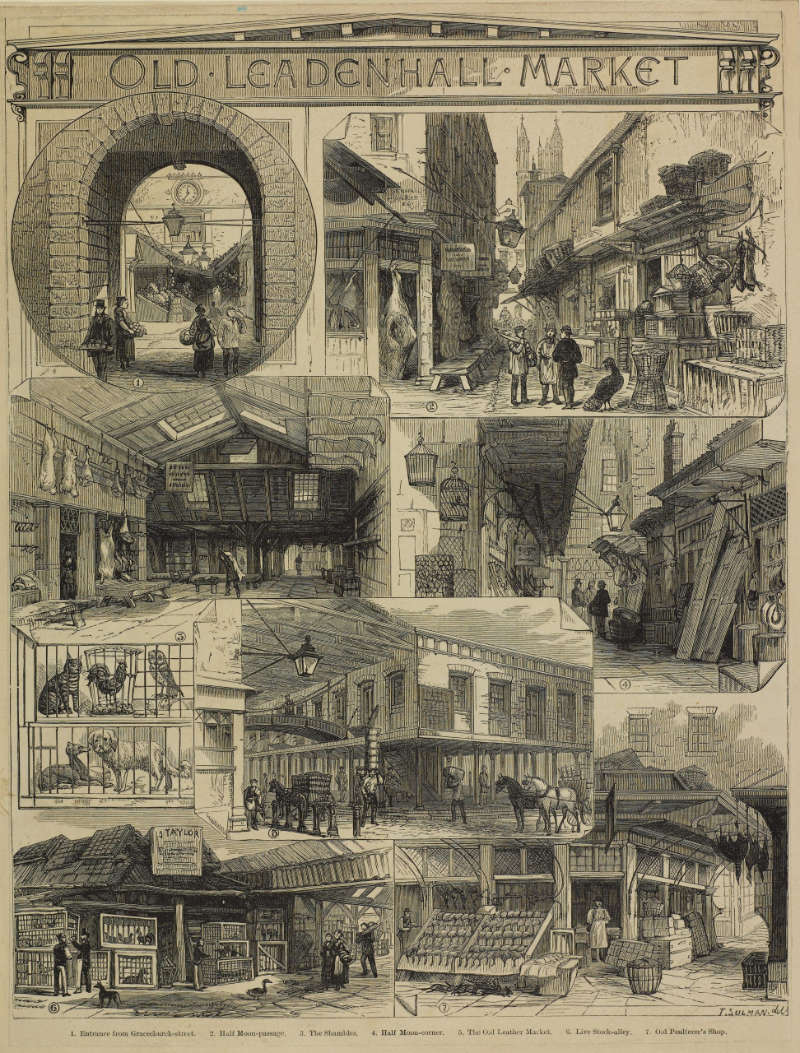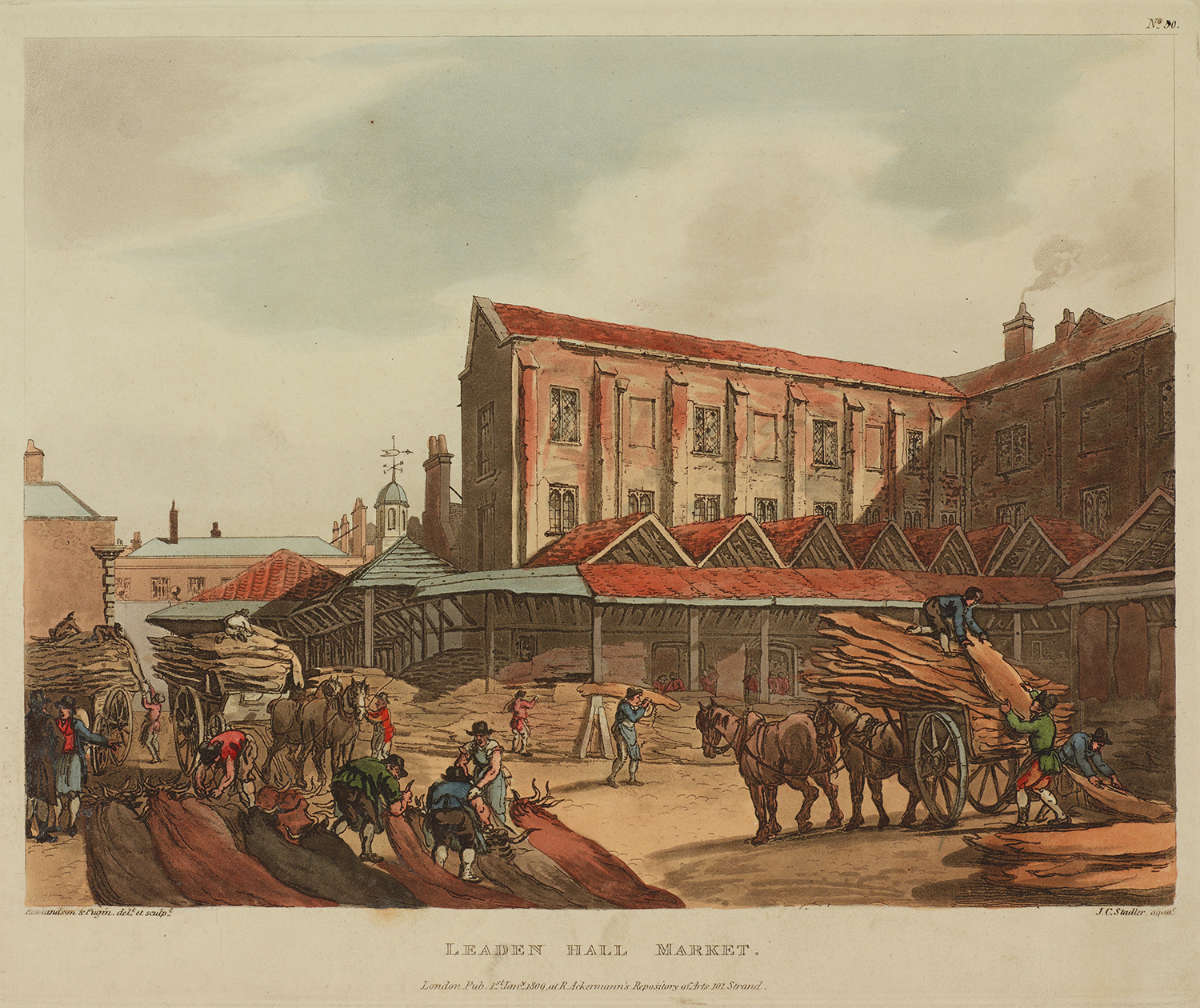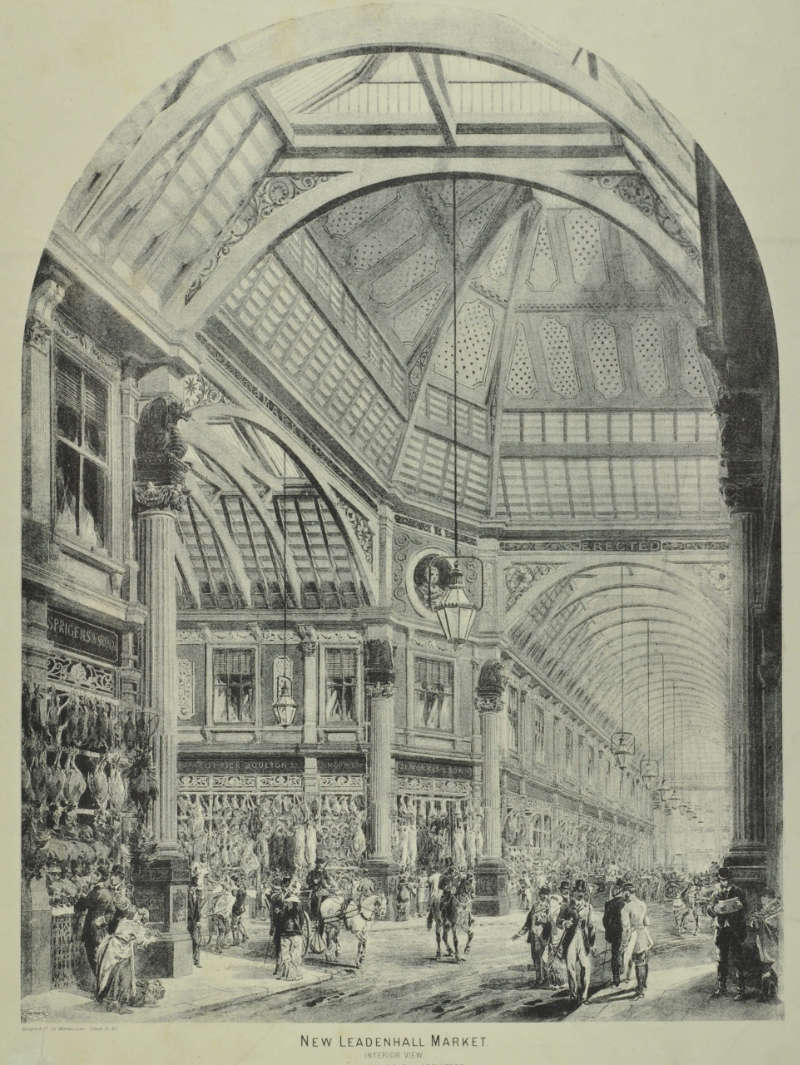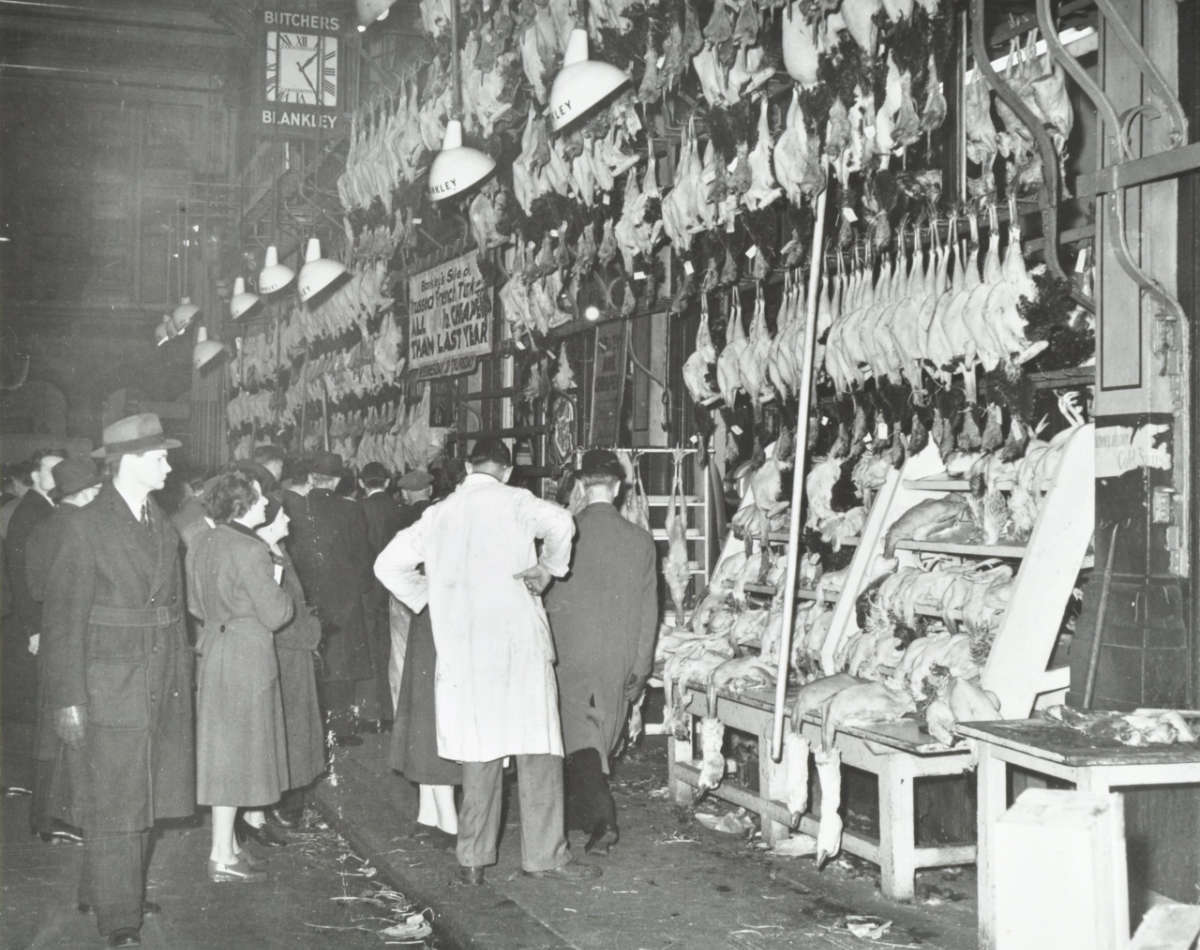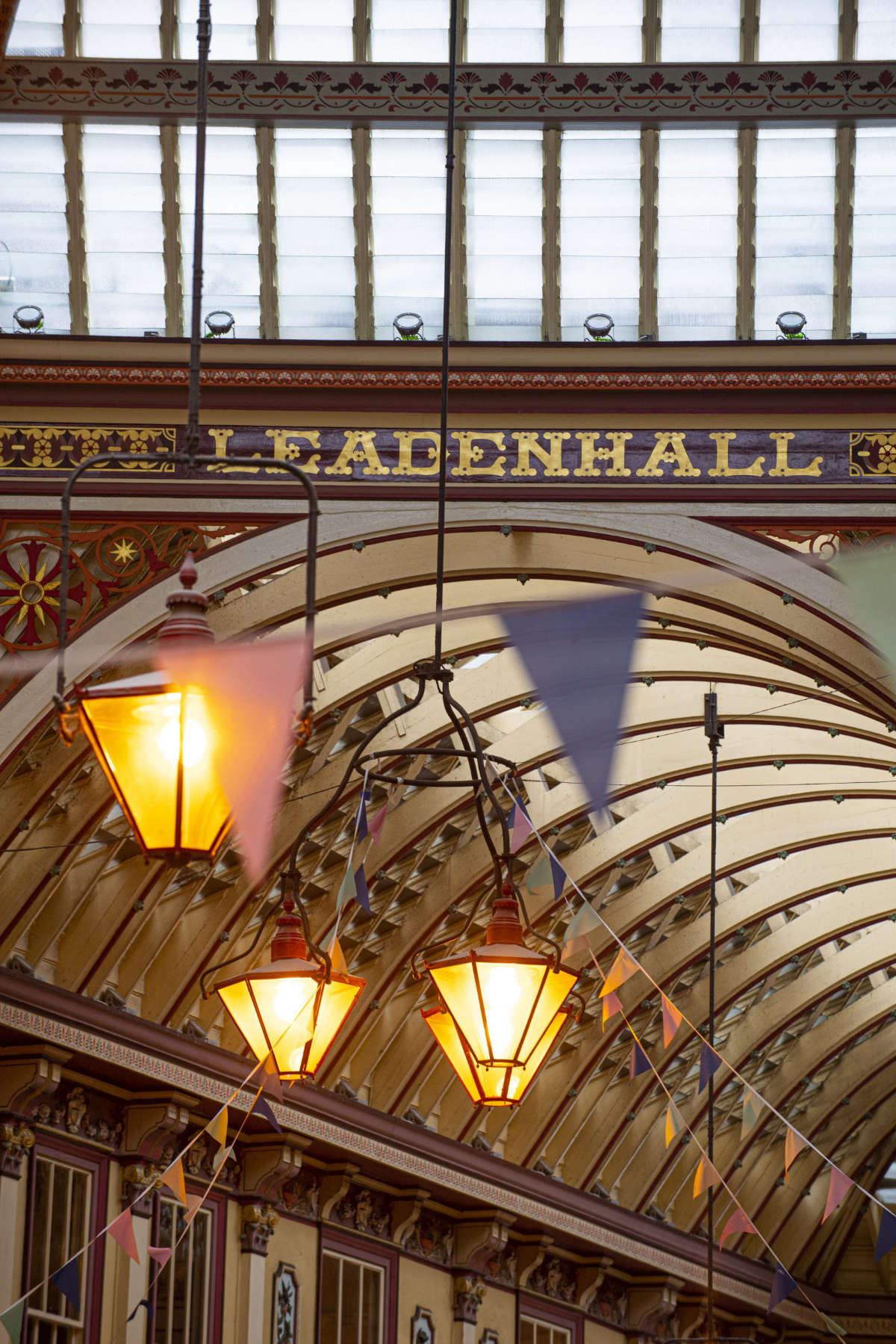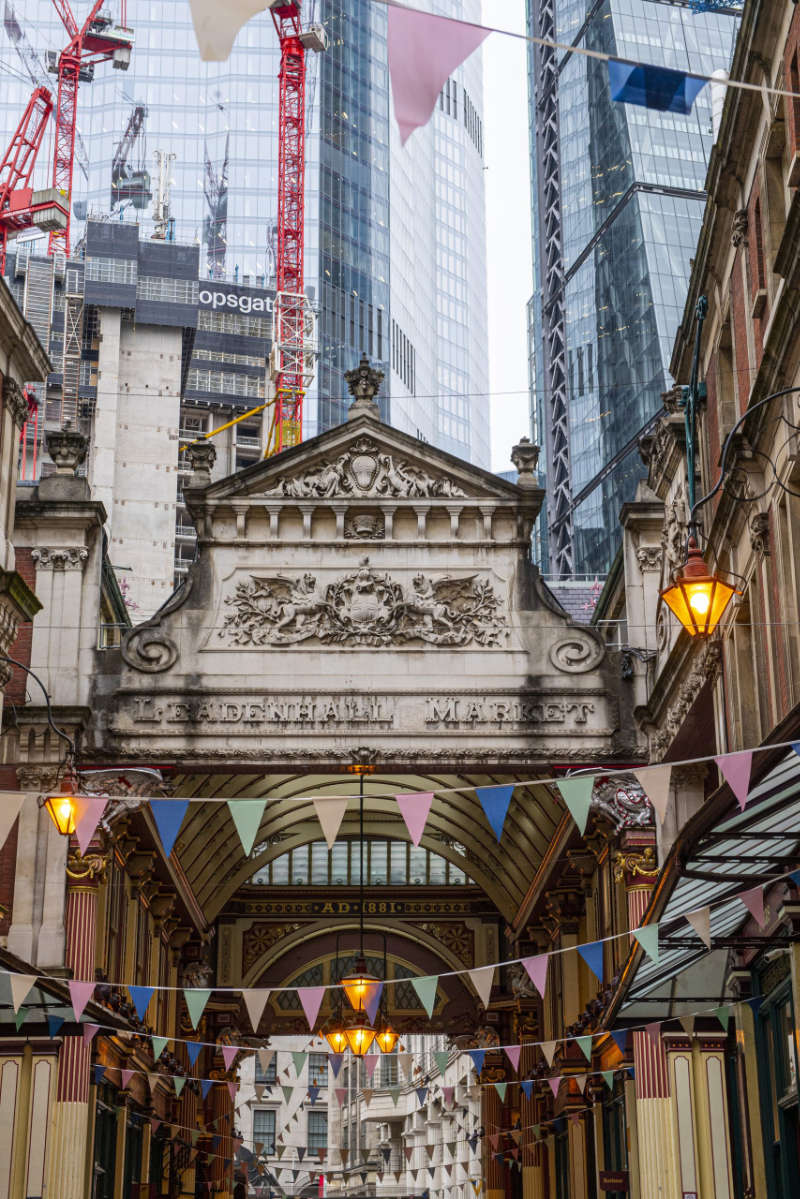The History of Leadenhall Market
The story of Leadenhall Market
Leadenhall Market dates back to 1321 and is situated in what was the centre of Roman London. Originally a meat, poultry and game market, it is now home to a number of boutique retailers, restaurants, cafes, wine bars and an award-winning pub.
Starting as the site of a manor, Leadenhall Market has survived changes in use, rebuilding, and even the Great Fire to become a popular destination for city residents, visitors and workers.
Read more
Situated in the centre of the City of London’s financial district, the current Grade II listed Market building, designed by Horace Jones, dates back to 1881. Its airy and light wrought iron and glass structure replaced the stone market previously created by Lord Mayor of London, Dick Whittington in the 15th Century. Leadenhall Market is owned and managed by the City of London Corporation.
The Heart of Roman Londinium
Leadenhall Market stands in the very centre of Roman Londinium – underneath its arches and cobblestones lie the remains of the Forum (market) and Basilica (courts). Bishopsgate, Cheapside and Leadenhall Street all follow the route of the old Roman roads.
Read more
The Romans began their conquest of Britannia in 43 AD, settling in London sometime after. For many Romans, Britannia was seen as remote and its people unsophisticated ‘They dwell in tents, naked and without shoes’ according to historian Cassius Dio.
The first Forum at Leadenhall dates from about 70AD, but was rebuilt in around 100 AD to be the largest Basilica Forum north of the Alps – occupying an area bigger than that of Trafalgar Square. Its Basilica, which was the most important civic building in a Roman town, was the largest outside Italy. The east-west axis of the Basilica cuts across the north side of the current Leadenhall Market building and the remains of a pier (pillar support) from the south arcade of the Basilica survive as preserved ancient monument in the basement of No.90 Gracechurch Street. These were uncovered when the new market was built during 1880-82.
In 1803, excavations in the Leadenhall Street area found a stunning example of Roman mosaic artwork, 9 feet 6 inches below street level. The subject of the mosaic was Bacchus, god of wine, agriculture and fertility, riding on a tiger and surrounded by drinking cups, cornucopia, serpents and other symbolic objects. Sadly, some of it had already been destroyed to build a sewer, but what remains now resides in the British Museum.
The Forum-Basilica’s function was for civic administration and as a market place, originating the mercantile use that continues today.
1st Century AD
1321
A popular meeting place
The market became a popular meeting place for poulterers and stood in approximately the north-west quadrant of the existing market site. ‘Foreigners’ – as traders from outside the City were then termed – began to operate their stalls at the Leaden Hall as business overflowed from the recognised poultry market at Cheapside.
Read more
In 1377, ‘foreigners’ were given additional rights to sell cheese and butter here.
Dick Whittington’s influence
In 1408 the former Lord Mayor Richard ‘Dick’ Whittington acquired the lease of the building, and then the site in 1411, gifting it to the City; City of London Corporation have been running it ever since. It quickly became one of the best places in London to buy eggs, meat, game, grain, poultry and fish. The meat and fish market occupied a series of courts behind the grand lead-roofed mansion of Leadenhall Market on Leadenhall Street.
Read 7 fascinating facts about Dick Whittington here.
Read more
The original Leadenhall Market was designed by John Croxton in 1440 and completed in 1449. He expanded the original hall into a large rectangular quadrangle, two stories high, complete with a public granary, massive storage rooms, and a small side chapel. The building included battlements and turrets, which suggests that the market could have been fortified, probably as a precaution in the event of a food shortage or some other kind of social unrest. Previously, the market had been set up in the narrow streets surrounding the building. Following completion, all trade occurred inside the arcade.
In 1463, the beam for the Tronage (royal tax upon wool) and weighing of wool was fixed at Leadenhall Market, signifying its importance as a centre for commerce. In 1488, it was decided that leather for Londoners was only allowed to be sold from Leadenhall Market. The Leather Market later moved to Bermondsey.
1400s
1600
A bustling food market
By 1600, the market included sellers of poultry, grain, eggs, butter, cheese, foodstuffs, wool, leather, and cutlery. It was the most important market in medieval and early modern London, especially for meat and poultry. The market would have been very similar to markets today: noisy, full of activity, and packed with people. The medieval street plan was preserved when the Market was rebuilt in the 19th Century – meaning visitors today can experience the same historic thoroughfares as medieval customers.
Read more
Leadenhall Market was an important and integral part of the surrounding community. The inclusion of a school and chapel suggests that it was much more than simply a space to buy and sell goods. During the reigns of the Tudor and Stuart Monarchs, it was used as a venue for shows and festivals.
In 1622, a cutlery monopoly was granted to Leadenhall Market. The Great Fire of 1666 destroyed much of the City of London, including parts of the market. When it was rebuilt not long after, it became a covered structure for the first time and was divided into the Beef Market, the Green Yard and the Herb Market.
Sir Horace Jones redesign
In the 19th century, the hide and meat market with its ‘crowded and unruly’ stalls were incompatible with the financial city and the City Architect, Sir Horace Jones, was instructed to design a ‘respectable arcade’ for the poultry market. Jones also designed Smithfield Market, Billingsgate Market and Tower Bridge. His designs replaced the earlier stone structure with wrought iron and glass – this is the building which stands today and was given Grade II listed status in 1972.
Read more
The current ornate glass roofed building was constructed in 1881 at a cost of £99,000, though infrastructure works to the surrounding approaches cost a further £148,000. Jones was influenced by Mengoni’s Victor Emmanuel Galleria in Milan for the design of the new Leadenhall arcade. Its crooked ground plan reflects the constraint of the medieval rights of way within which Jones had to work.
The new designs removed the itinerant salesmen who were now unable to rent the new, permanent stands. Though the character and atmosphere of the new market diverged from its previous incarnations, it enjoyed a similar level of success. This resulted in a necessity for additional space, with simpler brick extensions made to both side of Lime Street Passage, and new glazed passages in the south-west quadrant, both in 1885.
The wide entrance was built in a Queen Anne Revival style, supported to each side by Dutch-style houses. At the centre of the market is an octagonal crossing rising to an impressive dome and lantern supported by giant Ionic cast-iron columns with dragons.
Pevsner, in his ‘Buildings of England’ comments on the lettering at the entrances “as gloriously commercial as a circus poster” and of the City’s “dragons cheekily squeezed in”. There is a wealth of stamped and carved detail picked out in rich colours and many of the shops retain the spiked racks for hanging game.
The Legend of Old Tom (1797-1835)
During the 19th century, ‘Old Tom’ was a celebrated character in Leadenhall. He was a gander from Ostend who came to England by chance, due to his fascination with one of the female members of his flock. It is recorded that over two consecutive days 34,000 geese were slaughtered in the Market – but Old Tom managed to escape execution. He became a great favourite in the market, even being fed at the local inns. After his death in 1835 at the age of 38, he lay in state in the market and was buried on site.
Charles Dickens & A Christmas Carol (1843)
On Christmas Day, Scrooge awakens transformed and asks a passing boy to fetch him a prize turkey and have it delivered to the Cratchits. It’s very likely this would have been purchased in Leadenhall Market, which was London’s go-to place for buying fowl.
1800
1900
Retail activities prosper
During the inter-war years, the majority of the market’s wholesale trade moved to the Poultry Market at Smithfield, but other retail activities increased enormously to take its place. In the 1970s around fifty tons of poultry per week passed through the market, with the amount becoming unquantifiable over the festive period. Most of the units were occupied by butchers, poulterers, fishmongers and grocers. The Lamb Tavern has functioned as a public house since the market buildings were completed in the 1880s.
Read more
Leadenhall Market was an important and integral part of the surrounding community. The inclusion of a school and chapel suggests that it was much more than simply a space to buy and sell goods. During the reigns of the Tudor and Stuart Monarchs, it was used as a venue for shows and festivals.
In 1622, a cutlery monopoly was granted to Leadenhall Market. The Great Fire of 1666 destroyed much of the City of London, including parts of the market. When it was rebuilt not long after, it became a covered structure for the first time and was divided into the Beef Market, the Green Yard and the Herb Market.
The market as we know it
Leadenhall Market now offers a spectacular Victorian setting with the roof, cobbles and buildings preserved. Crowning the many entrances are elaborate stone pediments carved with dragons, swags, shields and other devices, with a particular emphasis on City heraldry. They are variously sized to reflect the hierarchy of entrances, and the larger ones have the market’s name and date inscribed upon them.
Read more
Harry Potter
Part of Harry Potter and the Philosopher’s Stone (the first film in the blockbuster series) was filmed in Leadenhall in 2000/2001. Leadenhall Market was used to represent the area of London leading to the popular wizarding pub The Leaky Cauldron and was the inspiration for the magical shopping street Diagon Alley. Hagrid can be seen escorting Harry to the Leaky Cauldron down its atmospheric streets.
A magical set
Leadenhall Market is a popular choice as a filming location and can be seen in many other movies including Tinker, Tailor, Soldier, Spy, Lara Croft: Tomb Raider, The Imaginarium of Doctor Parnassus, Hearafter and Love Aaj Kal. The pop group Erasure also filmed their music video for Love to Hate You in the market in 1991.
2000
Today
A vibrant, intriguing and iconic market
Today, Leadenhall Market continues to provide a wide range of shopping and dining options to its visitors. Looking at the beautifully clean, airy and vibrant Victorian buildings of today it’s hard to imagine the noise and smells of a 19th century market, but if you look closely at the shop fronts you will see the original wrought iron hooks where produce used to hang.
2021 marked the 700th anniversary of Leadenhall Market, and we continue to host a spectacular and varied calendar of events, art installations and activations, fast becoming a cultural hub as well as an iconic landmark of London.
